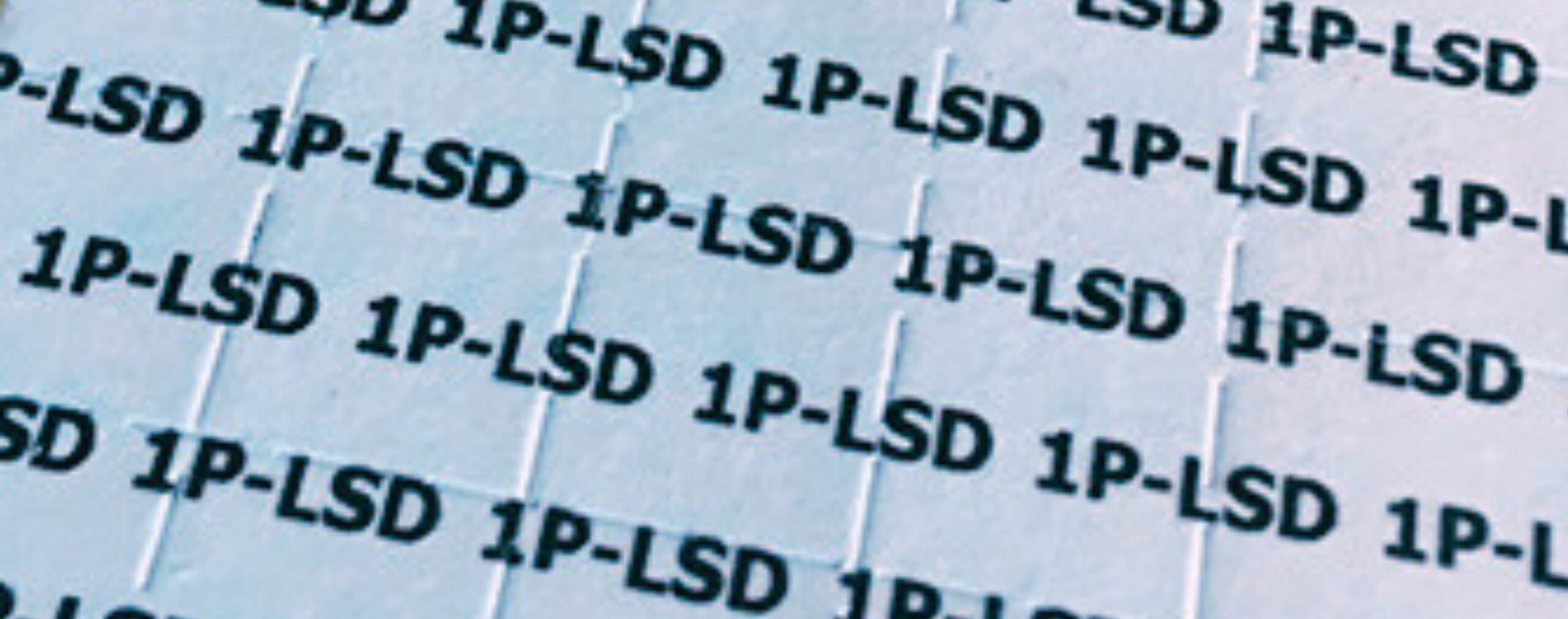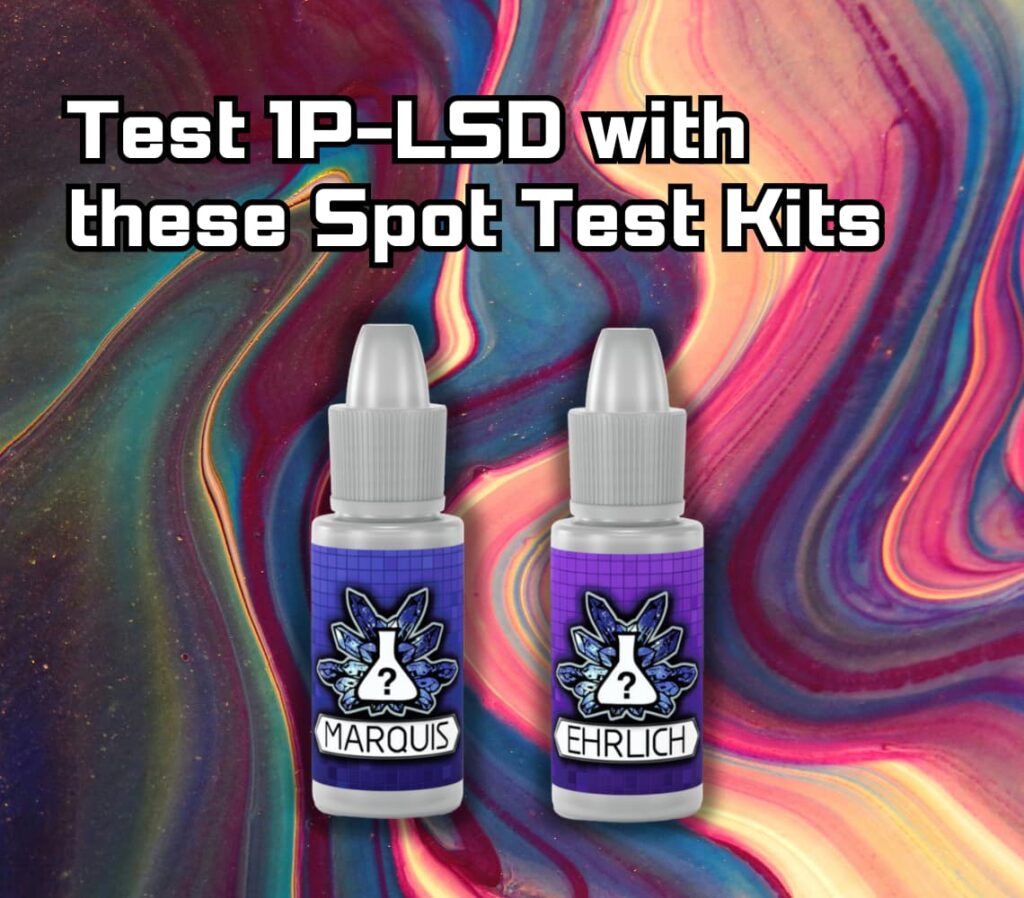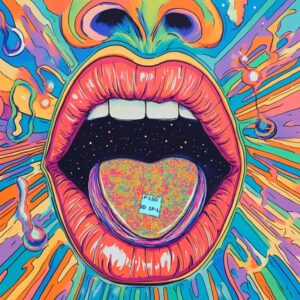As access to classic psychedelics continues to evolve, and drug enthusiasts search for loopholes in the legal landscape, analogs like 1P-LSD and 1cP-LSD have been gaining prevalence. These are both LSD analogs—compounds that closely mimic the effects of LSD-25, while navigating the shifting terrain of legal regulation.
Exploring 1P-LSD & Other Analogs: Effects & Differences from LSD
What is 1P-LSD and 1cP-LSD?
So, what are these substances really, and how do they differ from LSD? 1P-LSD (1-Propionyl-d-lysergic acid diethylamide) and 1cP-LSD (1-Cyclopropionyl-d-lysergic acid diethylamide) are both prodrugs of LSD. This means that once ingested, the body metabolizes 1P-LSD or 1cP-LSD into LSD, making both prodrugs’ structures—and the effects on the body—very similar to LSD. While some report a slightly different feel than LSD, 1P-LSD and 1cP-LSD’s effects are often reported to be nearly indistinguishable from traditional LSD.
1P-LSD was introduced around 2015, just as LSD analogs were starting to hit the gray market. At the time, LSD was—and still is—a Schedule I controlled substance in most countries. 1P-LSD, with its tiny chemical modification, makes it a distinct chemical from LSD, allowing it to bypass drug laws in places where analog laws don’t cover structurally similar compounds.
While 1P-LSD was originally legal in many places, around 2019, countries like Germany, France, the UK, and some U.S. states have banned it under analog laws, or added it directly to controlled substance lists. This is where 1cP-LSD came into play. 1cP-LSD was developed as an additional tweak to LSD’s chemical structure, making it distinct from both LSD and 1P-LSD, and allowing it to exist in the legal gray area again after 1P-LSD began facing legal restrictions.
Now, 1cP-LSD has been banned in some countries (like the UK and several EU nations). In the U.S., it exists in a legal gray area, but could be considered an analog under the Federal Analogue Act.
How do the effects of 1P-LSD and 1cP-LSD differ from LSD?
Though chemically similar and often sold interchangeably, some report nuances in the substances—such as 1P-LSD being slightly milder than LSD-25, and 1cP being slightly milder than 1P.
1P-LSD has been described as nearly indistinguishable from LSD, but some users note a slightly headier or sedating onset. Others feel there is a bit less emotional intensity, with a slower come-up and gentler visuals.
1cP-LSD has been said to be extremely similar to both LSD and 1P-LSD, but it is sometimes said to feel even slightly “cleaner" or lighter than 1P. Some also say that it has a longer come-up and comedown, with less of a peak “push” than LSD.
While 1P-LSD and 1cP-LSD are presumed to have similarly low toxicity and risk profiles as LSD, it is important to note that there is much less data on the pharmacological properties, metabolism, and toxicity of 1P-LSD and 1cP-LSD.
How to Test 1P-LSD and 1cP-LSD
In our previous blog post, we discussed how to test Gel Tabs, Blotter, and Liquid LSD. While 1P-LSD and 1cP-LSD may create similar effects to traditional LSD, the testing protocol is much different. Read on to learn how.
Testing 1P-LSD
For 1P-LSD, we recommend testing with the Marquis and Ehrlich reagents. Marquis should turn a soft reddish/purple, and Ehrlich should not react to it at all (within one minute). Also please note, any vibrant colors with Marquis could indicate something else, like an NBOMe.
Typically, a reaction becomes inconclusive after one minute, but with 1P-LSD, it's slightly different. If this substance stays in the reagent long enough, it will eventually hydrolyze into LSD. So, if you have our LSD Spot Kit Package, you could test your 1P-LSD with the Ehrlich and Hofmann reagents and wait. After some time with the substance staying in the reagent, it would then react as expected for LSD (pinkish/magenta with Ehrlich, soft purple with Hofmann).
Testing 1cP-LSD
For the typical testing period of one minute, 1cP-LSD should not react with any reagent.
However, though a reaction typically becomes inconclusive after one minute—with 1cP-LSD, it's slightly different. Like with 1P-LSD, if 1cP-LSD stays in the reagent long enough, it will eventually hydrolyze into LSD. So, if you have our LSD Spot Kit Package, you could test your 1cP-LSD with these reagents and wait. After some time with the substance staying in the reagent, it would then react as expected for LSD (pinkish/magenta with Ehrlich, soft purple with Hofmann).





